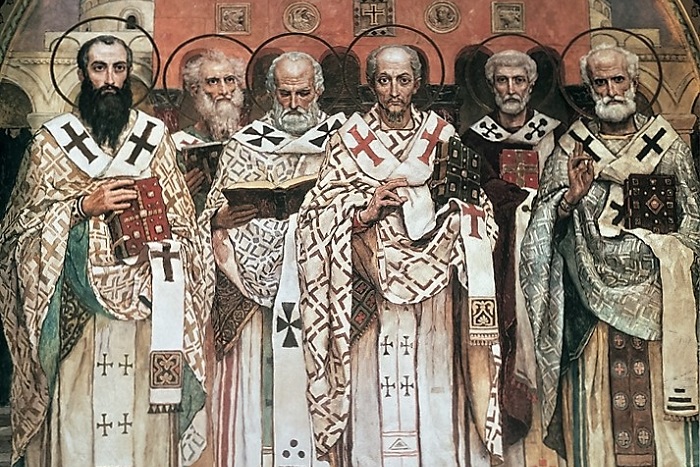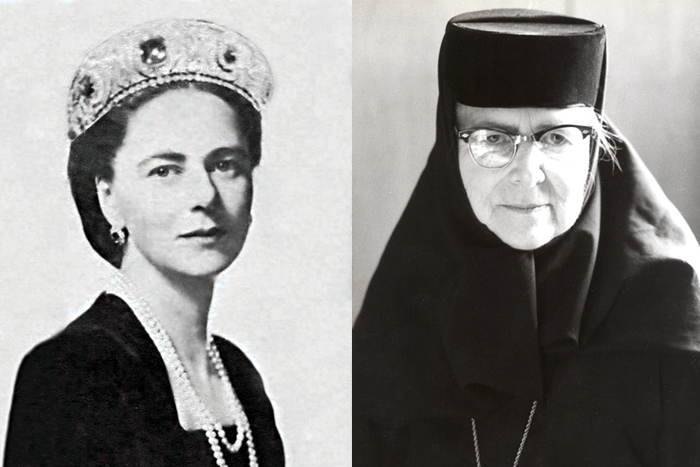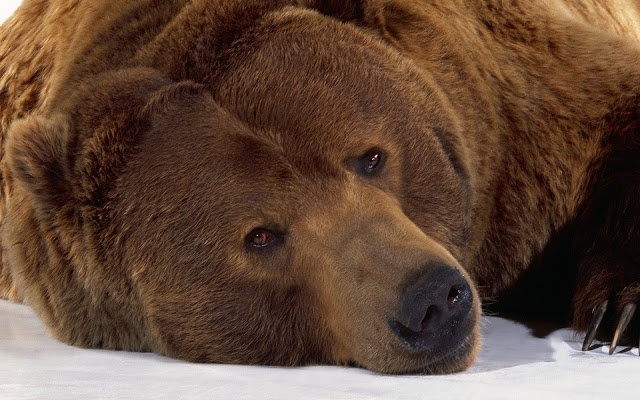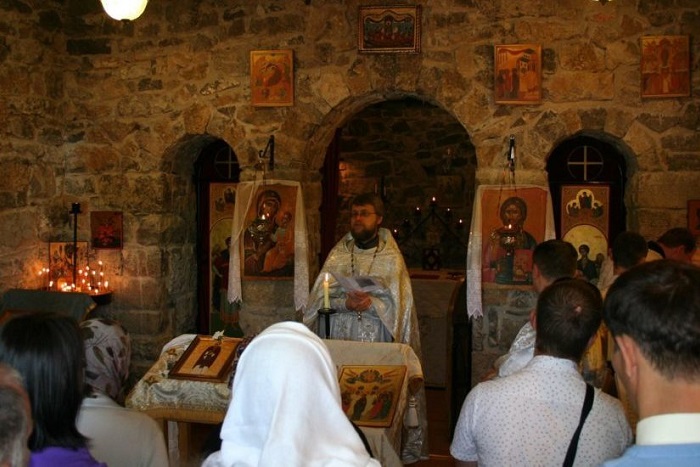
Archpriest George Zavershinsky has spent almost two decades as a priest in Western Europe, namely in Ireland and Scotland. His spiritual father had suggested that he go there right in the middle of a confession. The priest recalls, “It came out of the blue: I was a deacon at the Church of St. Catherine the Great Martyr in-the-Fields, a representation church of the OCA in Moscow. In spite of the fact that I hadn’t expected it, my heart immediately accepted his suggestion.”
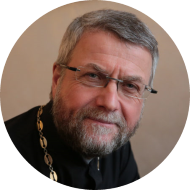
It may sound strange but I went to Ireland as if it were my home. The warden of the Orthodox congregation and an envoy of the Russian Embassy, who is a staunch believer and now a good friend of mine, met me at the airport. I was moved by their attention. Then we drove to the place of my ministry, passing the incredible landscapes and nice country houses… It felt warm and peaceful. The people around me were very amicable – in fact, it is the distinguishing feature of the Irish people.
Ireland is part of the Diocese of Sourozh, so I had to meet the ruling bishop of that diocese. At that time, the post was occupied by Metropolitan Anthony (Bloom). His Eminence met me in the sanctuary of the Cathedral in London. I wanted to express my respect and love: most believers, and even some non-believers, in Russia read his books. As soon as I started talking to him about it, His Eminence took my hand and interrupted me with a warm welcome. Later, there was a Liturgy: His Eminence Anthony celebrated it, and I stood aside the Holy Table. At the end of the service, he led me to the ambo, introduced me to all parishioners and asked them to welcome me. Everyone, including the metropolitan himself, sang Many Years to me. Then, the metropolitan gave me a cross and said, “Well, Father George, time to start.” He left the ambo and I gave the cross for the parishioners to kiss. I was impressed by the fact that the man had so much love toward people around him.
Before I went to Ireland, I had often wondered, “What is the purpose of my ministry? Should I focus on services and rites in the congregation or preach as frequently as possible? If I were to preach often, how would I do it?” It was an important question for me. Today, twenty years later, it has become clear to me that the Liturgy, the church environment, icons, chants, and rituals that a priest regularly performs are a way of preaching, too.
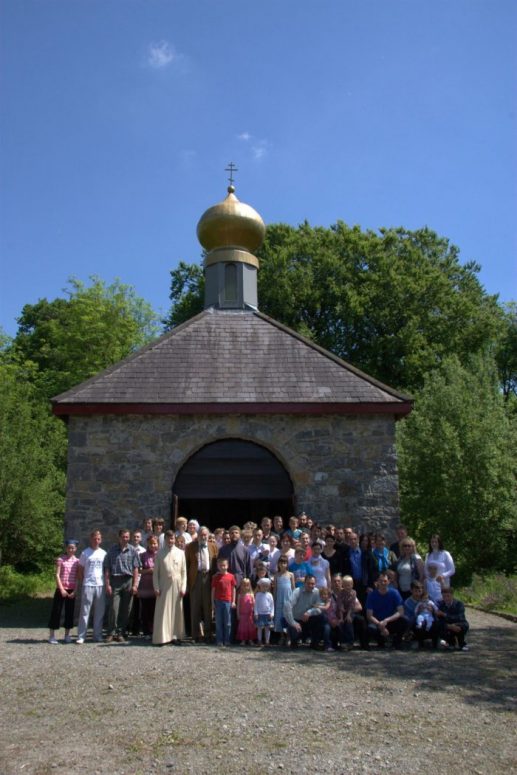
In my opinion, you’ve got to be the person you are, i.e., a faithful Orthodox priest, to be able to preach successfully. Another important condition is an excellent language proficiency. I wrote a doctoral thesis on theology in English and defended it in Trinity College (one of the oldest educational institutions in Europe). It has provided me with enough fundamental knowledge to be able to talk on equal terms even with Catholic hierarchs or theologians and to convey the Orthodox position on many issues. It may seem that we should not communicate with them at all – some people say that theirs is a different kind of Christianity or even “post-Christianity”. Some Orthodox believe that Catholics must remain as they were. I have a different opinion: I have always tried to find the correct answer for every person who asks me.
Orthodox believers in Ireland perceive the church as their community home where they can always come and pray, talk with the priest or simply drink some tea and have a friendly conversation.
Of course, it is mainly true of Russian-speaking emigres but the church attracts the Irish, who are for some reason willing to convert to Orthodoxy, too. When I served in Scotland, I received into Orthodoxy a Catholic man who had already been invited to the Vatican for a two-month-long pre-ordination practice. He suddenly came to me and said that he wanted to become Orthodox. First of all, I asked him not to hurry and to think it all over again. It took him more than two years. I prepared him for this decision. We wrote letters to each other. The man was already mature enough, and I saw that his decision wasn’t a spontaneous one: as the time passed by, he was becoming more and more determined. Currently, he is a member of our congregation. I didn’t ask him why he converted: it’s a tactless and provocative question. There was a man named Rory in our Dublin parish. He had been a navy officer. If you hadn’t known that he was Irish, you’d easily mistake him for a Russian: he was powerfully built with a splendid white beard. A small community of the Irish Orthodox gathered around him. Unfortunately, he isn’t with us anymore: I buried him.
Irish Catholics treat faith and Sacraments like Russian Orthodox. I have always been astounded by seeing young people who cross their hearts when passing a church. They cross their hearts not only when they are near a church but also when they see a funeral procession. I have never seen Russian youth do that, neither in those times nor now.
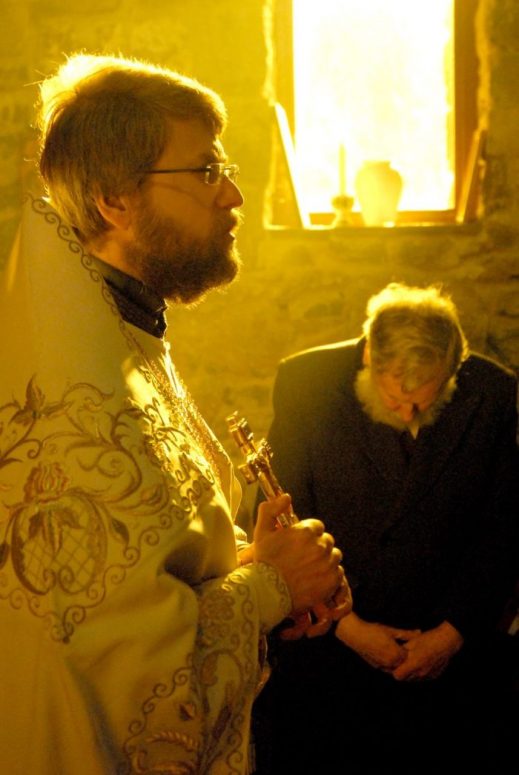
I build all my pastoral and missionary work on the Liturgy, and therefore, it has to be easy to understand and hear. I do my best to pronounce the so-called secret prayers as loudly and clearly as possible so that people could experience the Liturgy like I do as a priest. Priests often whisper those prayers but I have a different take on it. When I was a deacon, I assisted His Holiness Patriarch Alexis II during a Liturgy. He read those prayers so that all parishioners could hear them. I also preach a sermon in two languages: first in Russian and then in English. I let the parishioners sit during my sermon, to rest their feet while exercising their hearts. I don’t repeat the same sermon word for word (all Russian speakers understand English, so it’d be boring); instead, I add new intonations and images. It is a must for every divine office or occasional service: wherever there is a Gospel reading, there must be a sermon, too.
We cannot speak about Ireland and not mention the country’s emblematic holiday – St. Patrick’s Day. Most Russians associate this holiday with Guinness beer but for Christians (of whom there are quite a few in Ireland) this day begins with a mass in the local language, which St. Patrick himself spoke. It is remarkable and important that this holiday’s name isn’t just Patrick’s Day: it is called Saint Patrick’s Day. Even if you don’t care about the meaning of this holiday and spend one, two, three, five, or ten years celebrating it without thinking much, your child or grandchild will eventually ask you what this holiday means. You’ll have to explain to them why this family holiday bears this name. The name has an enormous missionary potential: in this case, it sends you back to the biography of this saint. Of course, many people regard this holiday as a dedicated day for drinking beer but whenever I want to complain of it, I stop myself: at any rate, the name of the saint is heard, and thus, someone might want to figure out who St. Patrick was.
Translated by The Catalog of Good Deeds

